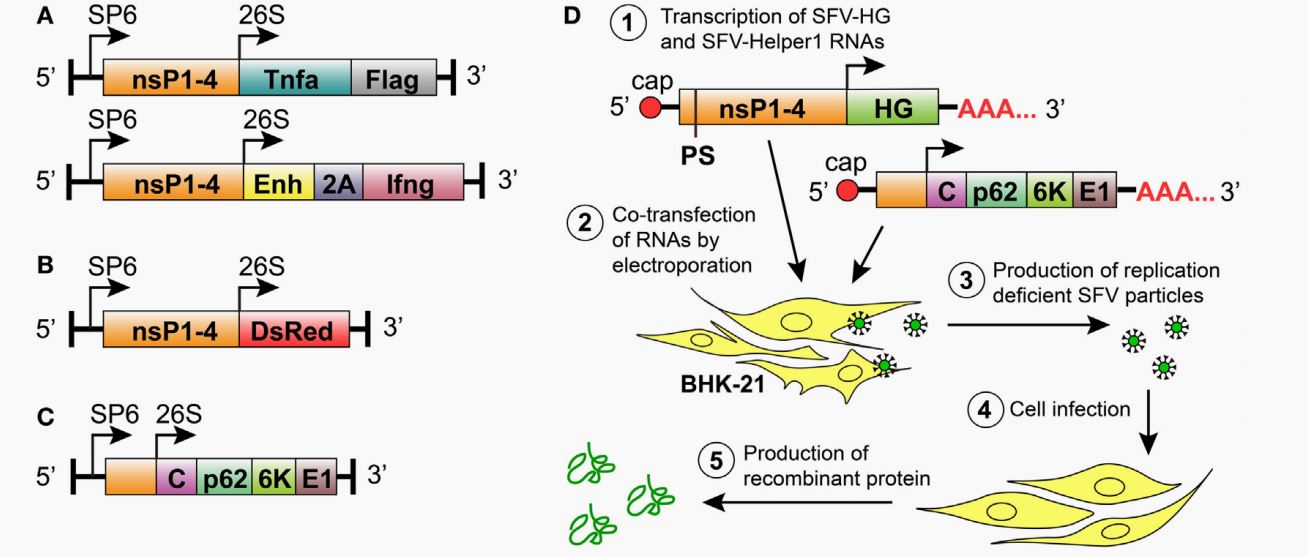Introduction of Semliki Forest Virus as Oncolytic Virus
Introduction to Semliki Forest Virus
Semliki forest virus (SFV), belonging to the Togaviridae family, is a single-stranded RNA virus that is associated with various infectious diseases in animals and humans. SFV is composed of four key proteins, one capsid protein and three types of envelope proteins produced by E1, E2, and E3 polypeptide, respectively. The capsid protein can integrate the RNA genome into nucleocapsids. The envelope proteins play an important role in forming the icosahedron structure. SFV can enter many host cells via the function of endocytosis, and the nucleocapsids can be released into the cytoplasm to activate the SFV replication process. The progeny RNA molecules bind to the capsid protein to produce a new nucleocapsid. E1 subunit and p62 are transferred into the endoplasmic reticulum to generate mature E2 and E3 necessary for virus budding.
Infectious diseases caused by SFV are very much like febrile diseases, such as flu and malaria. In the acute phase of infection, the symptoms are asymptomatic or mild, including headache and fever. However, rare symptoms, such as diarrhea, coma, as well as a respiratory failure have been also reported in recent studies. Moreover, SFV has been regarded as a suitable vector model for developing a genetic vaccine and anti-tumor drugs in disease therapy.
The Semliki Forest Virus as Oncolytic Virus in Disease Treatment
Poliovirus SFV is an enveloped virus with a diameter of 45-75 nm that can infect a wide variety of host cells in animals and humans. Meanwhile, the latest reports have demonstrated that SFV can be used as an oncolytic virus for treating various types of brain tumors, such as glioma. For example, several SFV-based delivery vectors, including SFV VA7 vector, have been generated and have shown higher efficiency of infection in mice models. Moreover, recombinant SFV particles have been integrated into oncolytic vectors for enhancing the tumor-specific expression and immune responses in different animal models.
Besides, the SFV virus can be genetically engineered with specific microRNA sequences to keep the replication of cancer cells and inhibit the replication of normal cells. The data have suggested that the modified SFV virus is capable of suppressing tumor growth and increasing the overall survival of mice suffer from glioblastoma. As a result, the application of SFV vectors has provided a perfect basis for cancer immunotherapy against many cancer types.

Nowadays, a series of clinical trials have been conducted by many companies or organizations to observe the safety and efficacy of novel delivery systems targeting oncolytic SFV. In phases I and II of clinical trials, the results have illustrated that SFV vectors are safe for clinical use, which can trigger enough immune responses, provide prophylactic protection, as well as strong efficacy against many brain tumors.
Reference
- Kurena, B.; et al. Generation and Functional In Vitro Analysis of Semliki Forest Virus Vectors Encoding TNF-α and IFN-γ. Front Immunol. 2017, 8: 1667.
